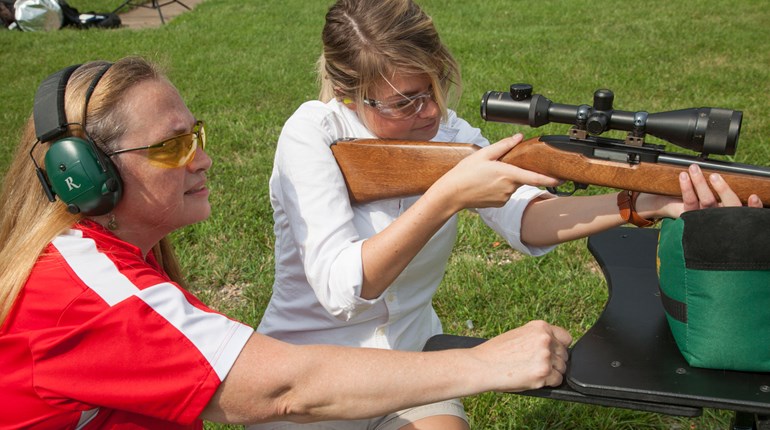
Rifles usually have either a single-stage trigger or a double-stage trigger. While there are advantages and disadvantages to each, ultimately the choice of one over the other boils down to the shooter’s preference. However, before the shooter can even have a preference, he or she must understand the differences between the two types.
Learning how each trigger system works can assist a shooter with trigger control. Much like matching a specific firearm and type of action to a specific shooting activity, single-stage triggers and double-stage triggers also should be matched up to the shooter’s specific activity.

Single-Stage Trigger
Single-stage triggers—the simplest trigger system—are the most common type of rifle and pistol trigger, found in most sporting bolt-action, lever-action, break-action, and pump-action rifles. With the single stage, the shooter must apply direct and continuous pressure on the trigger. When enough pressure is applied, the sear is released and the firearm discharges.
When pressing the trigger, the amount of pressure, or pull weights (pounds of pull), does not change. The single-stage trigger should have no slack, or take-up, though many firearms with this type of trigger have some “slop.” This trigger reset felt by pistol shooters should not be mistaken for a double-stage trigger.
The many advantages to single-stage triggers include a very short travel of the trigger. Because of this, they are faster and quicker to complete the firing process compared to the double-stage trigger system. This short travel also produces a very crisp break.
Another benefit of the single-stage trigger is that there are fewer moving parts, and consequently, fewer parts to break. And with fewer moving parts, single-stage triggers are usually less expensive to produce so the cost savings are passed on to the consumer.
The disadvantages of the single-stage trigger are that it is not as accurate, and it is more difficult for precision shooters to hit where they are aiming. This is because this type of trigger does not have the take-up that double-stage triggers systems have.
Single-stage triggers are preferred by competitive tactical shooters because of the speed that pistols can be cycled, as well as the reliability of the simple trigger.

Double-Stage Trigger
Double-stage triggers are becoming very popular, especially with modern sporting arms. A double-stage, also known as 2-stage triggers, have two distinct stages as the trigger is pulled during the firing sequence. In other words, a double-stage trigger has two trigger pulls in one.
The first stage of a double-stage trigger system consists of a light trigger pull. This trigger press ends with a very distinct stop. This initial movement is referred to by several names: slack, creep or take-up. The stop is often referred to as “the wall.”
During the first stage, the firearm does not discharge. It merely sets up the shot. It gives the shooter the ability to minimize movement and get his or her breathing in check. When the wall is reached, all the shooter must do is apply additional pressure.
The second stage is when you reach the wall and overcome it with added pressure. This is the “break.” The instant the trigger breaks, the firearm will discharge. This gives the shooter complete control when the shot is desired. This gives the shooter better accuracy and precision.
Because of the take-up in the first stage, double-stage triggers are considered to be the safest type of trigger system. If the firearm is jostled or dropped, it is less likely to accidentally discharge compared to the single-stage trigger.
The double-stage trigger is preferred by many competitive and precision shooters. Many of these shooters claim that the trigger break is long but very crisp, and with practice, can be quick.
The choice of single-stage and double-stage trigger systems is individual. Choose the one that fits your shooting style. Knowing the difference between the two triggers and understanding how they operate will help you become a better shooter. Whatever your activity, proficiency with a firearm begins with knowing how it works and how to properly and safely use it.














































